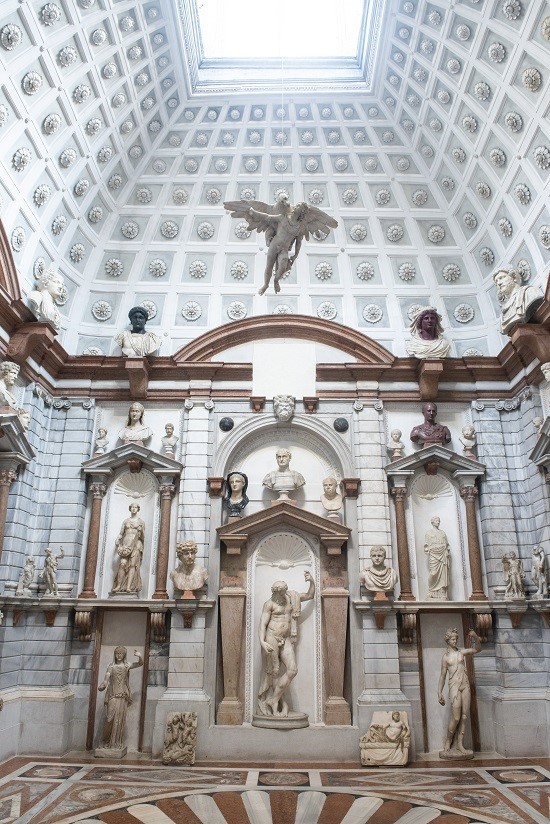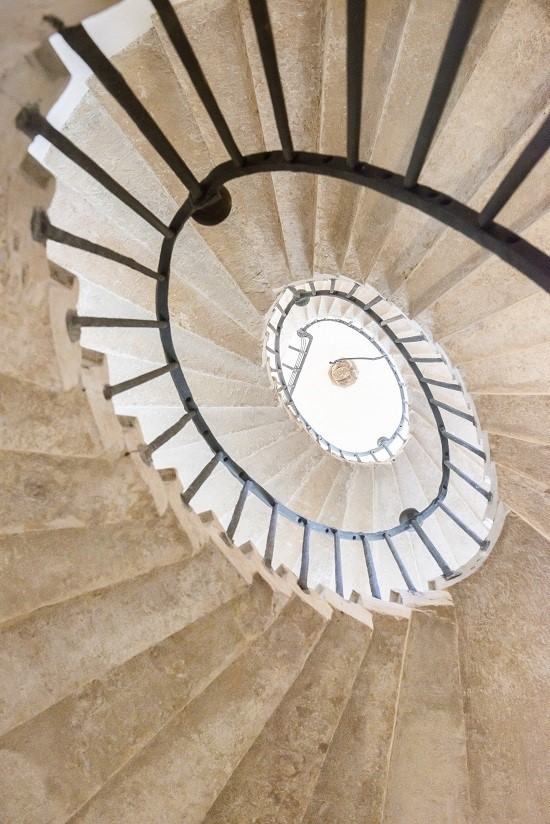Visitors to
Venice have plenty of
opportunities to explore the tastes of deep-pocketed, visionary collectors like
Peggy Guggenheim, whose Grand Canal palazzo is a treasure chest of 20th-century
American and European art, or François Pinault, who rotates his contemporary
art collection between two Venice venues.
اضافة اعلان
But that was true even hundreds of years ago. Take
the case of the Grimani family.
In the 16th century, their
palazzo near the church
of Santa Maria Formosa, a short stroll from St. Mark’s Square, became something
of a must-see for A-list visitors to Venice (including Henry III of France),
thanks to the rare and prestigious antique statuary collected by Giovanni
Grimani (1506-93), patriarch of Aquileia, and before him his uncle Cardinal
Domenico Grimani (1461-1523).
It is the good fortune of modern visitors that both
Grimanis did something practically unheard of at the time, donating a
significant part of their collection to the Republic of Venice on the condition
that it be shown in public in a suitable setting.
 (Photo: NYTimes)
(Photo: NYTimes)
“It’s a marvelous gesture,” said Stefania Mason, the
author of several books on Venetian collectors. “It’s the first case of a
donation for public consumption. They wanted everyone to see it,” she said. “It
was an exceptional gesture in every way.”
In 1590, the entrance hall of the
Marciana Library
in front of the Doge’s Palace was earmarked to host the Grimani collection, and
the public museum opened six years later. The Grimani donations eventually came
to form the core of Venice’s Archaeological Museum, now housed in an elegant
16th-century building on the south side of St. Mark’s Square.
The recent restoration of the ceiling of the
entrance hall and the redesign of the museum’s layout provided an excuse to
bring a number of those classical sculptures back to the
Palazzo Grimani after
nearly 430 years.
 (Photo: NYTimes)
(Photo: NYTimes)
A first lot of sculptures was installed in 2019, in
nooks and crannies and on pedestals in the so-called Tribuna, a room built by
Giovanni Grimani to showcase his collection. They were part of an exhibition
titled “Domus Grimani,” curated by Toto Bergamo Rossi, director of the
nonprofit
Venetian Heritage Foundation, and Daniele Ferrara, who oversees the
Veneto’s Regional Directorate for Museums.
The palazzo had been open as a public museum since
2008, much restored but scantily decorated. COVID-19 notwithstanding, once the
statues went on display, visitors to the palazzo multiplied many times and the
Tribuna became an Instagram darling.
Last year, another wing of the palazzo was
refurbished, and about 20 statues were installed in the “Room of the Doge,”
originally an art-rich hall honoring the family patriarch Antonio Grimani
(1434-1523), a spice merchant whose military and political acumen led to his
selection as doge in 1521.
“I have to say that I didn’t expect that kind of
wow,” Bergamo Rossi said during a walk-through a few months ago.
 (Photo: NYTimes)
(Photo: NYTimes)
In time, some works will return to the archaeological
museum in exchange for other pieces from the Grimani collection, while copies
are also being made of some works essential to both places. “Through
collections such as this, we can reconstruct the history of the republic,”
Ferrara said.
The Grimani family had a leg up when it came to
collecting. Domenico Grimani lived in
Rome for many years, mediating between
the pope and the Venetian republic. Many ancient sculptures were found on land
the family had bought on the Quirinal Hill, once site of an ancient Roman bath
and garden. All Domenico Grimani had to do was dig.
The family’s economic ties in the Adriatic, on the
other hand, gave them access to Greek originals. Later, Giovanni Grimani
dedicated his life to buying ancient works of art, filling the collection with
purchases from traveling merchants and local antiquarians.
When Giovanni Grimani decided to renovate the
palazzo in the second half of the 16th century, he called upon a stable of
Tuscan and Roman architects, decorators and painters, like Giovanni da Udine,
who worked with Raphael in the Vatican, and Federico Zuccari, who painted a
monumental staircase. The palazzo is “really an anomaly,” said Mason.
Last year, the palazzo’s portego — a ceremonial hall
on the piano nobile, or main floor — got a new look when 12 large works by
German painter Georg Baselitz were installed in large stucco frames originally
used for portraits of the Grimani family. Visiting the palazzo last fall,
gallerist Lorcan O’Neill remarked that the Baselitz paintings, which will
remain on long-term loan, were “so modern, but they completely look as though
they have been here forever.”
Gagosian and Venetian Heritage are producing an
exhibition of works by American artist Mary Weatherford, to open at the museum
April 20 during the Art Biennale. Titled “
The Flaying of Marsyas,” the
paintings are inspired by the Titian painting of the same name.
The relationship between Venetian Heritage and state
culture officials “has been very interesting” and fruitful, Ferrara said.
In 2020, a private collector decided to sell a
portrait of Giovanni Grimani attributed to Domenico Tintoretto. The state did
not have “immediate resources” to buy it, said Ferrara, so he turned to
Venetian Heritage, which raised the funds, bought the painting and donated it
to Italy. Naturally, it ended up in Palazzo Grimani.
“It’s so nice to have it. After all, he is what the
Venetians call the ‘paron de casa’” or head of the household, Bergamo Rossi
said of the portrait. “And I think he is very happy to be here.”
Read more Culture and Arts



